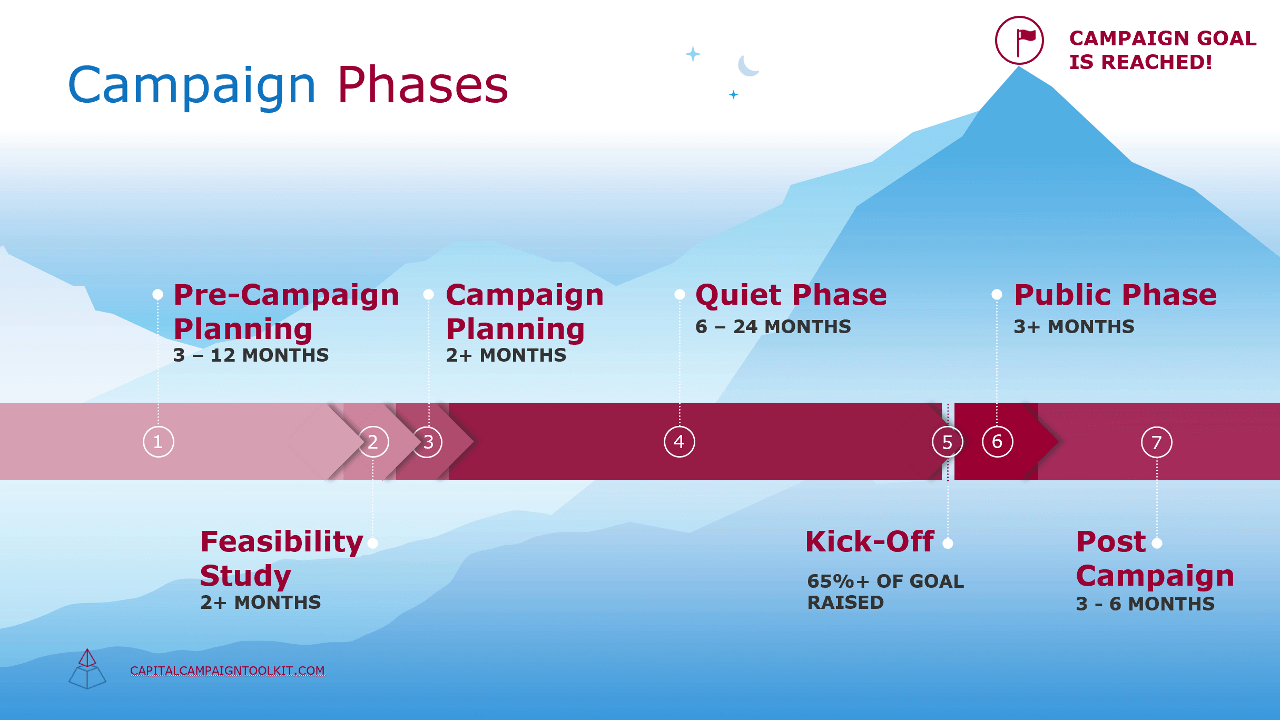
You’re probably reading headlines about the economy and wondering if you should put your plans for a capital campaign on hold, at least until economic indicators get a bit more stable.
After all, it may not seem like a good idea to plan a campaign when the stock market may tank. Communicating with alumni, partners, and funders about your needs naturally becomes more challenging in times like these. You worry that your donors will be more conservative in their giving, just when you need them to give the big gifts you’ll need to succeed in your capital campaign.
But today, I’ll tell you why you should continue forward with your campaign planning.
Just so you know, I’m not a cockeyed optimist… I don’t think you should proceed with a capital campaign if you aren’t likely to succeed. That said, your likelihood of succeeding with a campaign and the ups and downs of the economy aren’t as intertwined as you might imagine.
Are We Headed for a Recession?
We can say with little doubt that we’re heading for a recession. Its duration and extent remain to be seen, so there’s a lot of gray area at the moment. Here’s a bit of recession history to ground our thinking:
A recession is a period of temporary decline identified by a fall in the Gross Domestic Product for two or more consecutive quarters. Since 1948, we have had 11 recessions, averaging one every 6 years! The Great Recession (2008-2009) lasted 18 months. The recession earlier in 2022 lasted just 2 months, but the average duration of recessions in the last 60 years is just under a year.
If you look at business headlines any given week, you’ll likely see conflicting views. Here’s a diverse collection of recent economic headlines:
- Bear Market Not Over
- US Market Faces Mid-Cycle Adjustment Rather Than a Recession in 2023
- Strong Jobs Report
- Third Quarter Growth Strong
- Brace Yourself for 2023
Confusing, right?
Chances are the headlines you gave credence to are those that best reflect your general optimism or pessimism and the short-term trends of your investment reports. So are we headed for a recession? Maybe, but it clearly depends on who you ask.
Understanding Capital Campaign Cycles
If you find yourself scratching your head about the fluctuation of economic predictions, consider this: A typical campaign cycle is between 10 and 15 years.
Taking a normal cycle of planning and conducting a campaign every 12 years – remembering that we have a recession on average every 6 years – you’re statistically likely to encounter not one, but two recessionary periods during or between your campaigns and the major projects they fund.
The economy goes up, the economy goes down… but your organization’s needs and the needs of the people you serve continue to grow. That’s what you should focus on as you consider planning a campaign in 2023.
Is your organization ready for a major investment that will help springboard your level of service? Are you ready to ramp up to do more good? Do you know what that would take? If so, you should start planning your campaign, screening donors, and begin reinforcing your most important relationships.
The Timing of Capital Campaigns is Flexible
A typical capital campaign takes approximately 3 years from planning to completion, but that timeframe is remarkably flexible. You can spend more or less time on many of the phases as best serves your needs and current circumstances. The graphic below shows the seven phases of a campaign:

Notice that Phase 1, Pre-campaign Planning, can take anywhere from 3 to 12 months. And Phase 4, The Quiet Phase, can take from 6 to 24 months. This fluidity gives you the ability to flex your campaign schedule to accommodate (among other things) the economic realities of the moment.
You might, for example, plan your campaign in unsettling economic times like the ones we find ourselves in now. That is likely to lead you to a Quiet Phase during a period of greater stability.
In fact, there are advantages to starting your campaign planning in uncertain times. Most communities have multiple campaigns going on at the same time. Perhaps the college, the hospital and the symphony hall are all thinking about campaigns. Then add the local homeless shelter, the humane society and the theater, plus two or three more.
Just about every feasibility study raises the issue of campaign competition as a worrisome factor when assessing the potential of the campaign. In uncertain times, however, some of those organizations are likely to hold off. And when they do, they give you an opportunity to jump in early, ahead of some of the competition and connect with your alumni.
As my colleague, Kent Stroman, says, “Get in line. Move up. Move to the front of the line.” In my opinion, that’s excellent advice!
Key takeaway: We live in times of economic uncertainty! Not just now or this year or next year… but just about all the time. So let your campaign decisions be driven not by economic projections, but rather by the needs of the people you serve here and now.
Capital Campaign Readiness Assessment
Is your organization ready for a capital campaign? This simple assessment tool will help you find out. You’ll assess six key areas of your organization. Take this free assessment and find out if you’re truly ready for a campaign.
Amy Eisenstein, ACFRE, and Andrea Kihlstedt are co-founders of the Capital Campaign Toolkit, a virtual support system for nonprofit leaders running successful campaigns. The Toolkit provides all the tools, templates, and guidance you need — without breaking the bank.
